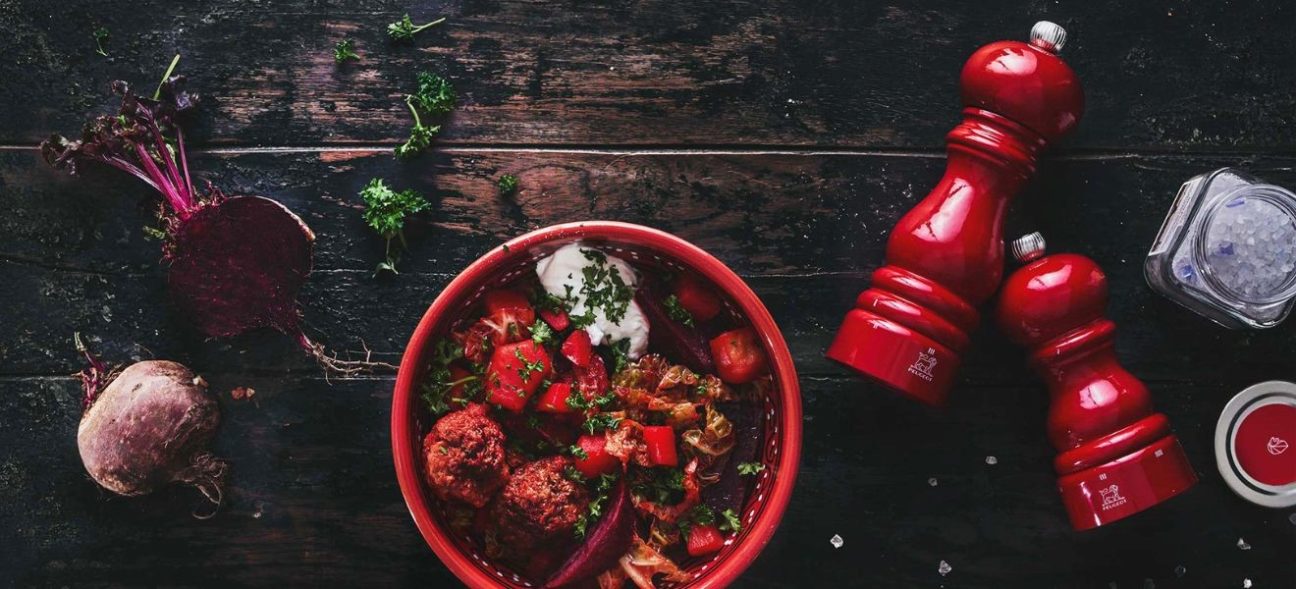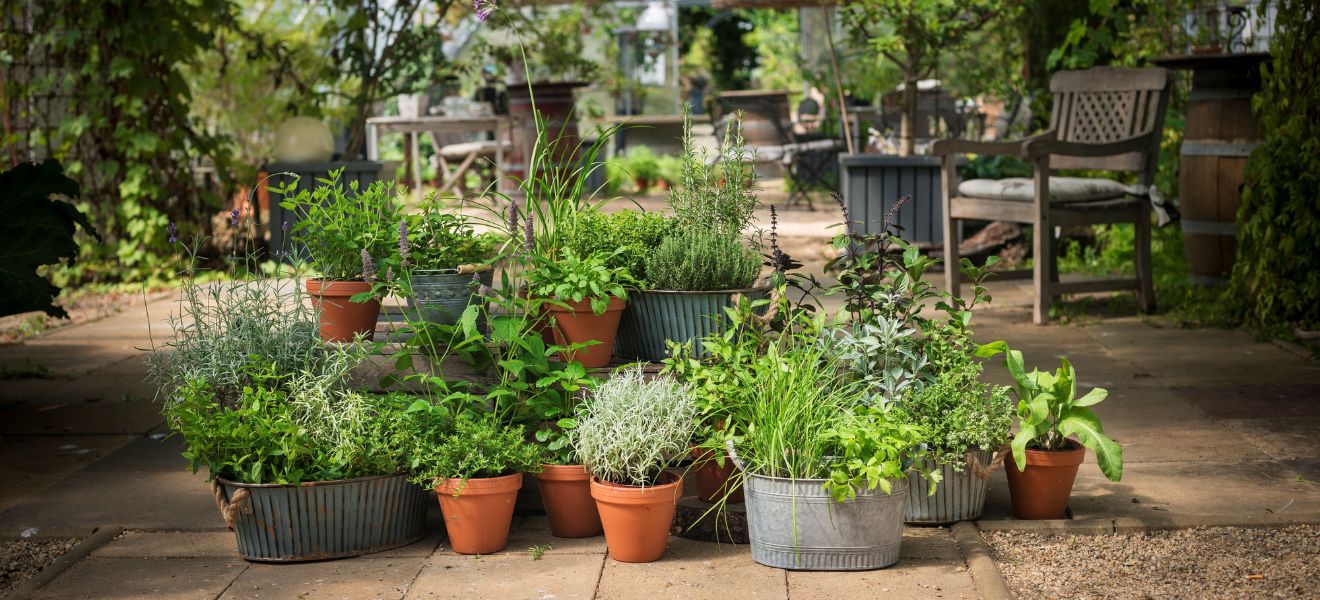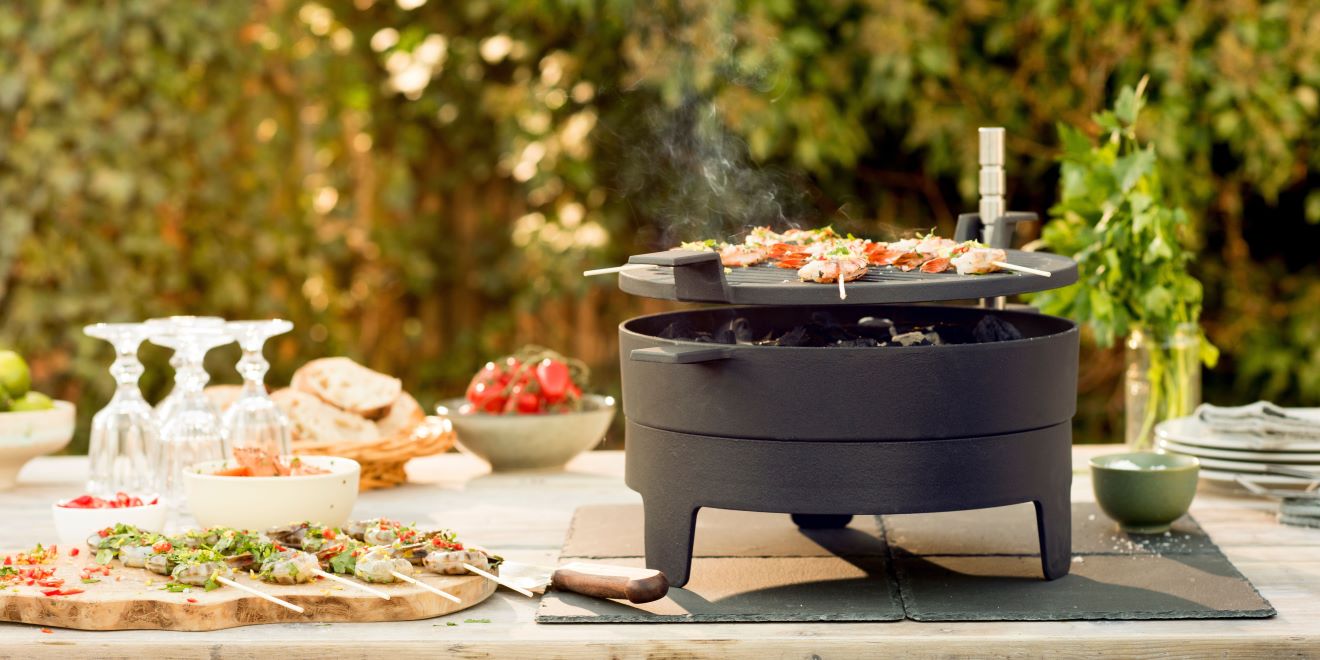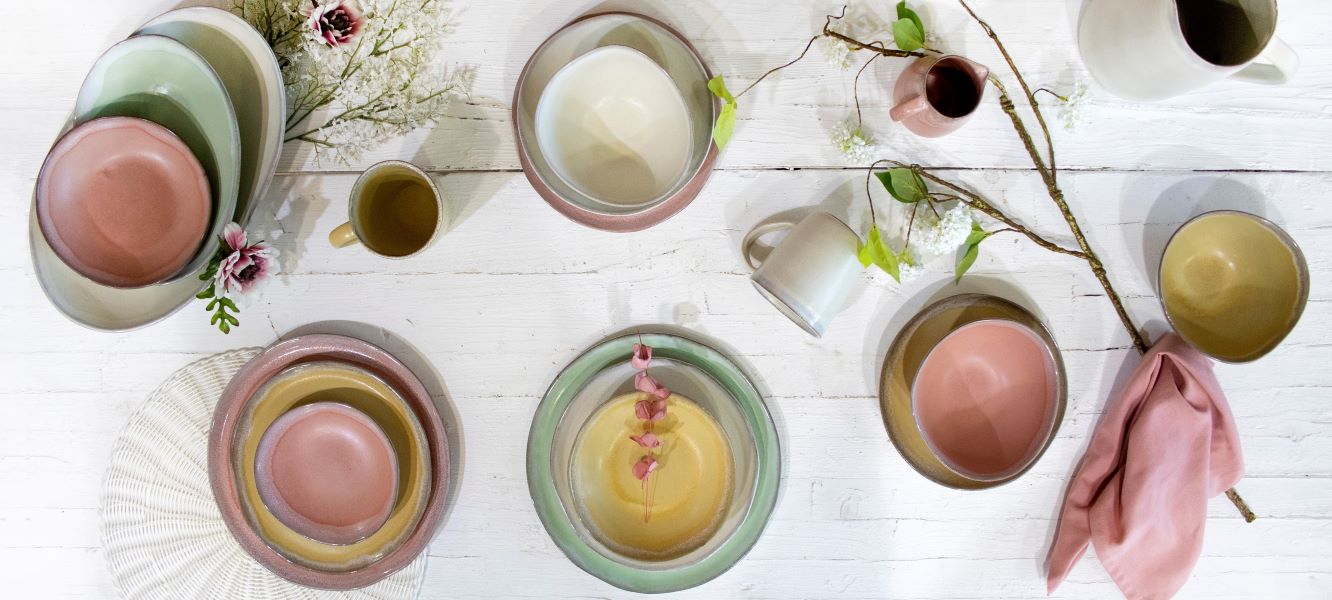Spices are among the oldest trade goods and their history is thrilling as well as colourful. Once as valuable as gold and diamonds, their diversity enables endless new culinary experiences today. Mills, mortars and co. grind, grate and cut grains, capsules and seeds so that they can freely develop their intense aromas and the ‘scent of paradise’ floats over the food.
Whether pepper, cinnamon, aniseed, allspice, ginger, coriander and many others – spices from all over the world bring taste and variety into our kitchen and lives. Today, we reach for the salt and pepper shaker at the table as a matter of course, consider when cooking whether a hint of chilli is missing for the final taste or whether the vanilla note of the dessert is already perfect. Spicy souvenirs are also a fantastic gift for all enthusiastic cooks and those who want to become one. Especially when they are packaged as decoratively as in the glass tubes from Gourmet Berner or the swing-top jars from Kilner.

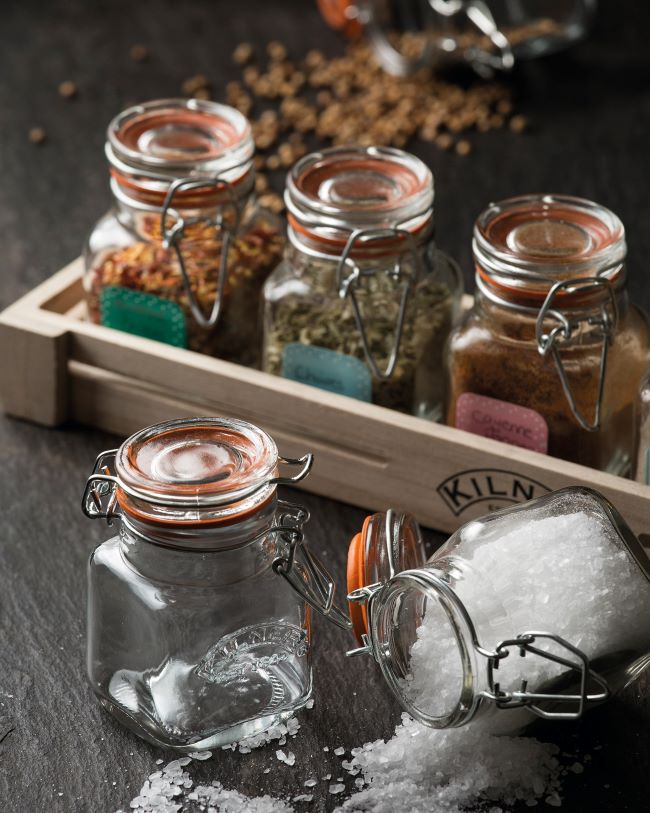
Rich merchants and embattled colonies
For a long time, pepper – the ‘black gold’ – was reserved only for the rich. Exotic spices filled the pockets of merchants, they were the cause for wars and conquests, for the rise and fall of colonial empires. The voyages of discovery of Christopher Columbus and Vasco da Gama were always about the precious condiments from the faraway Orient and Asia. Whoever mastered the growing of spices beckoned immeasurable wealth. Until the 19th century, for example, the highly coveted nutmeg only grew on an Indonesian group of islands in the Molucca archipelago, which became known as the Spice Islands. Only when it became possible to grow the spices outside their home countries the prices decreased. Eventually, everyone could afford the spicy ingredients. Fortunately, since then the ‘scent of paradise’, as the aroma of spices is described in the Middle East, can float over every meal. Delicious dishes from the tajine immerse you in the culinary world of 1001 nights. The characteristic taste is provided by the Moroccan mixture Ras-el-Hanout, a mix of hot, sweet and bitter spices such as chilli, nutmeg, cinnamon, aniseed and many more.

Unlimited spice variety
“Spices are a key component in cooking for everything from an all-purpose seasoning to dynamic, flavourful marinades”, points out British celebrity chef Gordon Ramsey in his MasterClass Teaching. However, the question of how many and which spices one needs in the kitchen cannot be answered in a general way. Because the preferences in the individual countries are as different as the dishes around the globe themselves. Pepper is the most commonly used spice in Germany, France, Great Britain and the USA, followed by salt, according to a recent study by the French mill specialist Peugeot Saveurs. In third to seventh place among the spices most frequently used in the kitchen, chilli, curry, nutmeg, cinnamon and pre-wetted salt were named in Germany. These were also listed in the other countries, but with different frequencies of use.
China captures the taste of an entire country with its ‘five spices powder’. This traditional spice mixture provides the unmistakable spicy-hot and at the same time slightly flowery-sweet taste that is associated with sweet and sour sauce. The Indian classic garam masala contains pepper, cloves and cinnamon. Even when it comes to salt, the choice is huge. Well-known is Fleur de Sel, a salt that forms a thin, delicate crust on the surface of seawater as it evaporates. First-class rock salts are also in high vogue among gourmets. In the province of Punjab in Pakistan, Himalayan table salt is extracted, which Wagner Life Design processes into gourmet salt in various grain sizes.


Mortar or spice mill?
The range of salt, pepper and spice mills is just as large as the wealth of spices themselves. Graters such as the iconic Microplane zester grater are also a preferred tool for some spices, or you can reach for a mortar, one of the oldest kitchen gadgets around. Working with a mortar may take some time, but it has almost a sensual component. Nose and mouth are delighted when essential oils are released and coarse or fine textures can be created according to one’s own taste. Mortars are available in ceramic, porcelain, stainless steel, wood or even granite, such as the chic black mortar by Cole & Mason.
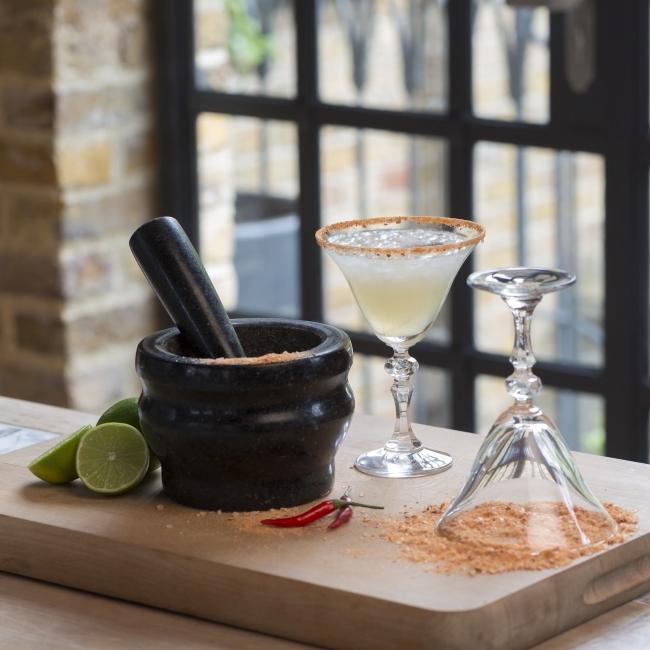

With a mill, you can grind larger quantities in a relatively short time and it can also handle hard spices without much effort. A wide variety of models are available in terms of shape, colour and design. The Billund grinders from the Danish label CrushGrind® are reminiscent of colourful building blocks, while the stainless steel pocket grinder from Peugeot guarantees the necessary spice even when you’re on the go. At the table, the Spicy Ducks by Donkey Products ensure a pleasant time. There are also specialists such as the linseed/sesame grinder by AdHoc or the ginger grater by Moha. A practical storage option for spice powders are the jars by Dreamfarm, which are equipped with a double lid both for sprinkling or fully open for scooping, pouring and easy refilling. Unground spices are also well kept in the containers, as a suitable spice grinder can be placed directly on top of them.


The grinder makes the difference
The most important thing in any spice mill is the grinder, which is responsible for the aromatic grinding of the spices. High-quality mills are characterised by a durable, abrasion-resistant and long-lasting grinding mechanism that can take on the hard pepper and spice grains in the long run. These criteria are fulfilled by stainless steel and ceramic. Nowadays, titanium is also used. The choice of material is finally decided by personal preference. With steel or titanium grinders, pepper and co. are finely chopped, whereas with ceramic grinders, the spices are more likely to be ground. If the mill is to be used for salt, it is important to ensure that the steel grinder is specifically made for salt, otherwise it can rust due to moisture. Ceramic grinders cannot rust and are therefore also suitable for salt. The mills from the traditional German manufacturer Zassenhaus are equipped with grinders made of high-performance ceramic Made in Germany. For the perfect grinding result, the grinding degree can be adjusted six times. The scale ranges from powdered to coarsely ground. Tip: Whether ceramic or steel, you should not grind directly over the steaming saucepan, as this can cause the grinder to stick. It is best to grind on a small plate and then add the ground product to the food.


Hot cuisine
Three real hot spices are among the most popular condiments: chilli, garlic and ginger. As an interesting flavour contrast, chilli can be found in chocolate, ice cream or cheese. But the small red peppers show their full power when it comes to spiciness. While a normal sweet pepper has a Scoville value of 0 to 10, the chilli Cayenne has a value of 50,000. The scale for estimating spiciness was developed by the American Wilbur Lincoln Scoville as early as 1912. Habanero Red Savine, one of the hottest chilli varieties, has over 500,000 Scoville. The eye-catcher on the table is the ‘Pepe’ chilli cutter from AdHoc, which takes up the shape of the chilli. Want more superlatives? The pea-sized chilli pepper Aji Charapita is priced at up to 24,000 euros per kilogram. It has thus displaced saffron as the world’s most expensive spice.
Garlic is a true miracle bulb. It can be used fresh, dried, roasted or pickled in oil as a spice. It is an aromatic ingredient for many meat and fish dishes or the main ingredient for the classic spaghetti aglio e olio. Mr. Garlic, the garlic press from Börner, offers its services so that the processing can take place almost odour-free. Like garlic, ginger has an antiseptic effect, is rich in vitamin C and also contains magnesium, iron, calcium, potassium, sodium and phosphorus. It is hard to imagine Asian cuisine without ginger, with its fruity hotness. With a special ceramic grater, for example from Kyocera, it can be grated effortlessly.



Spice colours: sensitive and cosy
Paprika, cardamom, curry and co. don’t just add a spicy note to cooking. The colourful flavour booster also spreads a positive atmosphere in the kitchen, on the table and throughout the home. Spicy shades such as curry yellow, chilli red or cinnamon brown can be combined well with each other and create a lively, sensual ambience. Depending on the season, the intense colours look fresh and rich or warm and cosy. From the cushion to the teapot, from the mixing bowl to the roaster, the spice colours make (living)-spaces glow and connect countries and cultures. Finally a touch of the exotic is included.

Header image: Peugeot Saveurs / Photo: Patrick Rosenthal
